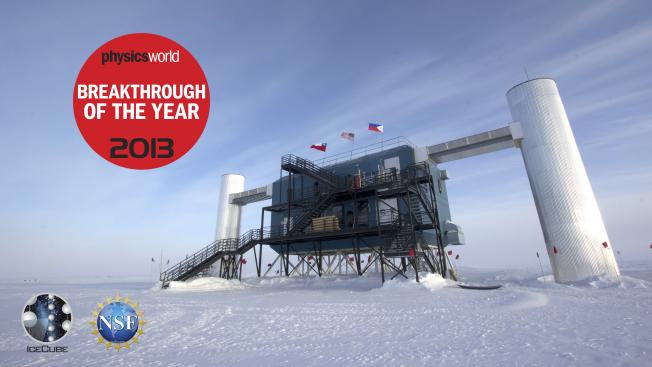Racetrack inflation and assisted moduli stabilisation
Nuclear Physics B 766:1-3 (2007) 1-20
Abstract:
We present a model of inflation based on a racetrack model without flux stabilization. The initial conditions are set automatically through topological inflation. This ensures that the dilaton is not swept to weak coupling through either thermal effects or fast roll. Including the effect of non-dilaton fields we find that moduli provide natural candidates for the inflaton. The resulting potential generates slow-roll inflation without the need to fine-tune parameters. The energy scale of inflation must be near the GUT scale and the scalar density perturbation generated has a spectrum consistent with WMAP data. © 2006.High-energy neutrinos from astrophysical accelerators of cosmic ray nuclei
ArXiv astro-ph/0703001 (2007)
Abstract:
Ongoing experimental efforts to detect cosmic sources of high energy neutrinos are guided by the expectation that astrophysical accelerators of cosmic ray protons would also generate neutrinos through interactions with ambient matter and/or photons. However there will be a reduction in the predicted neutrino flux if cosmic ray sources accelerate not only protons but also significant number of heavier nuclei, as is indicated by recent air shower data. We consider plausible extragalactic sources such as active galactic nuclei, gamma-ray bursts and starburst galaxies and demand consistency with the observed cosmic ray composition and energy spectrum at Earth after allowing for propagation through intergalactic radiation fields. This allows us to calculate the expected neutrino fluxes from the sources, normalised to the observed cosmic ray spectrum. We find that the likely signals are still within reach of next generation neutrino telescopes such as IceCube.High-energy neutrinos from astrophysical accelerators of cosmic ray nuclei
(2007)
Anisotropy studies around the galactic centre at EeV energies with the Auger Observatory
Astroparticle Physics 27:4 (2007) 244-253
Abstract:
Data from the Pierre Auger Observatory are analyzed to search for anisotropies near the direction of the Galactic Centre at EeV energies. The exposure of the surface array in this part of the sky is already significantly larger than that of the fore-runner experiments. Our results do not support previous findings of localized excesses in the AGASA and SUGAR data. We set an upper bound on a point-like flux of cosmic rays arriving from the Galactic Centre which excludes several scenarios predicting sources of EeV neutrons from Sagittarius A. Also the events detected simultaneously by the surface and fluorescence detectors (the 'hybrid' data set), which have better pointing accuracy but are less numerous than those of the surface array alone, do not show any significant localized excess from this direction. © 2006 Elsevier B.V. All rights reserved.The intergalactic propagation of ultrahigh energy cosmic ray nuclei
Astropart.Phys. 27 (2007) 199-212



